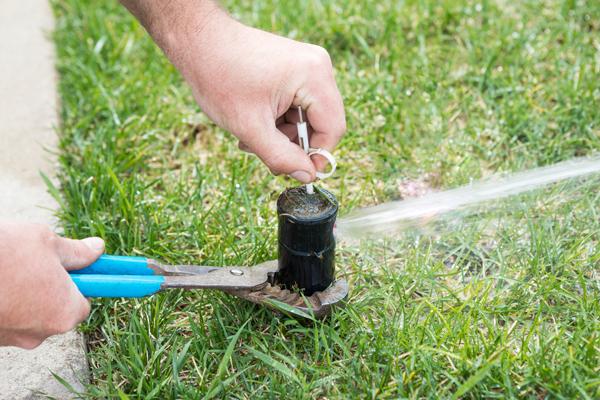
Irrigation Nation: How to Get Started with Irrigation Systems
Inefficient irrigation is an all-too-common culprit when it comes to water waste. In fact, on average, outdoor irrigation accounts for 50% of summer water usage. Let’s take a look at how we can get that volume down while maintaining a beautiful, evenly – and automatically – watered yard or garden.
Should you use high-flow or low-flow irrigation systems?
When you think of outdoor irrigation, you may picture high-flow systems, which are the ones that pop up out of the ground and spray water in arcs or circles. These types of systems are easy to keep an eye on because if they don’t pop up when it’s time, you’ll notice. However, they tend to spray water faster than even absorbent soil can soak it up, which can cause uneven water distribution and runoff. If you’ve got your eye on a high-flow system, consider equipping it with sprinkler heads or rotors designed to reduce water flow, aiding absorption and fighting runoff. For instance, rotary sprinklers can improve water efficiency by 30% over spray heads. You can get them at most irrigation distributors.
Low-flow systems, meanwhile, use “drip irrigation,” which slowly delivers water over longer periods of time. Water travels through aerated, flexible tubing that allows water to slowly seep into the soil. This way, less water is wasted.
Drip is the preferred method of irrigating trees, shrubs and vegetable gardens, but it’s not generally recommended for plants often categorized as ground cover.
Drip lines can be placed either above or below ground, but if you choose to leave your drip lines above ground, be sure to have family and friends keep an eye out so they don’t trip.
Automatic vs. scheduled irrigation
While manual irrigation (turning on your hose or sprinkler system by hand) is a great way to prevent unnecessary water use, not everyone has the time (or the memory!) to do it regularly. Because of that, many rely on automatic irrigation, so the effectiveness and sustainability often come down to the parameters you set. Fortunately, technological advancements have made it easier for your automatic irrigation system to take more factors into consideration when turning on or regulating water volume.
For instance, some automatic irrigation systems can be equipped with devices and sensors to keep them from watering when the ground’s already wet. Rain shutoff devices and soil moisture sensors detect recent rainfall or current levels of moisture in the ground and keep you from watering already-wet areas. Meanwhile, “smart” irrigation controllers can automatically adjust irrigation zone by zone to accommodate a variety of factors, including climate, plant water needs and changing weather conditions.
Of course, all of these technologies are only as effective as the planning and execution behind them. Carefully evaluate your unique requirements and adjust accordingly. And don’t be afraid to ask for help. You can request a free water audit, which includes assistance with irrigation scheduling, by contacting us at (408) 279-7900.
Marrying technology with design
For a truly water-wise garden, though, you have to be “Smart from the Start.” That includes finding less thirsty plants that fit your design sensibilities, arranging different plants according to their water and sunlight needs, and other factors. The Smart from the Start program, a California Urban Water Conservation Council initiative, includes a Water Smart Landscape Checklist (linked above) and helpful irrigation templates to help you get started.